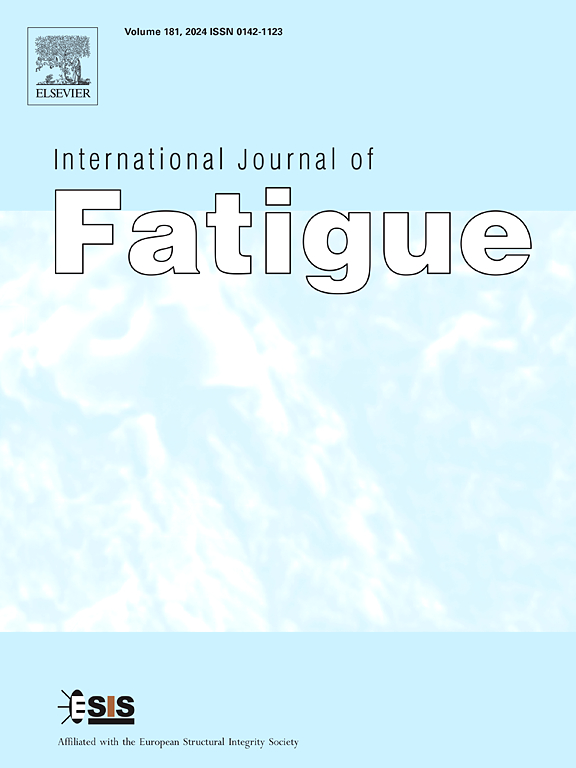Multiaxial fatigue of a titanium alloy under complex loading with asymmetric paths
IF 5.7
2区 材料科学
Q1 ENGINEERING, MECHANICAL
引用次数: 0
Abstract
Multiaxial fatigue under complex asymmetric loading paths has gained significant attention because it better represents the actual loading conditions of engineering components. However, research on this topic remains limited. In this study, a definition of the multiaxial fatigue stress ratio is proposed by identifying the peak and valley points of complex loading paths. Subsequently, the Walker mean stress correction method is extended for application to multiaxial fatigue. By incorporating mean stress correction into an existing symmetric model, an improved asymmetric multiaxial fatigue model is developed without introducing additional fitting parameters. To validate the proposed model, 50 fatigue tests were conducted on TC4 alloy using 12 distinct loading paths with varying mean stresses and phase angles. The results show that the model accurately captures damage differences across various asymmetric loading paths. Most predicted fatigue lives fall within the 3±1 scatter band of the experimental data. The reliable prediction performance demonstrates that the proposed model can be effectively applied to multiaxial fatigue life prediction under asymmetric loading in engineering structures.
求助全文
约1分钟内获得全文
求助全文
来源期刊

International Journal of Fatigue
工程技术-材料科学:综合
CiteScore
10.70
自引率
21.70%
发文量
619
审稿时长
58 days
期刊介绍:
Typical subjects discussed in International Journal of Fatigue address:
Novel fatigue testing and characterization methods (new kinds of fatigue tests, critical evaluation of existing methods, in situ measurement of fatigue degradation, non-contact field measurements)
Multiaxial fatigue and complex loading effects of materials and structures, exploring state-of-the-art concepts in degradation under cyclic loading
Fatigue in the very high cycle regime, including failure mode transitions from surface to subsurface, effects of surface treatment, processing, and loading conditions
Modeling (including degradation processes and related driving forces, multiscale/multi-resolution methods, computational hierarchical and concurrent methods for coupled component and material responses, novel methods for notch root analysis, fracture mechanics, damage mechanics, crack growth kinetics, life prediction and durability, and prediction of stochastic fatigue behavior reflecting microstructure and service conditions)
Models for early stages of fatigue crack formation and growth that explicitly consider microstructure and relevant materials science aspects
Understanding the influence or manufacturing and processing route on fatigue degradation, and embedding this understanding in more predictive schemes for mitigation and design against fatigue
Prognosis and damage state awareness (including sensors, monitoring, methodology, interactive control, accelerated methods, data interpretation)
Applications of technologies associated with fatigue and their implications for structural integrity and reliability. This includes issues related to design, operation and maintenance, i.e., life cycle engineering
Smart materials and structures that can sense and mitigate fatigue degradation
Fatigue of devices and structures at small scales, including effects of process route and surfaces/interfaces.
 求助内容:
求助内容: 应助结果提醒方式:
应助结果提醒方式:


